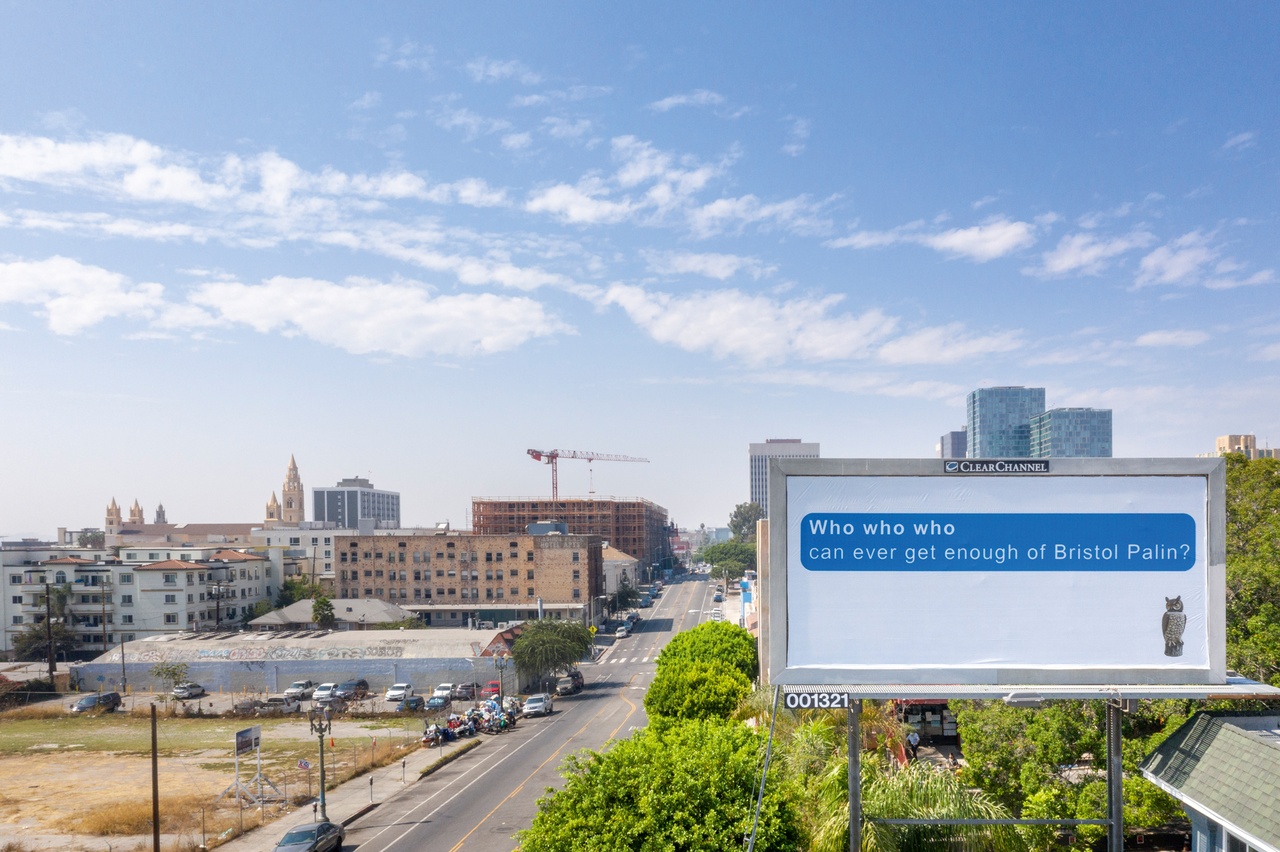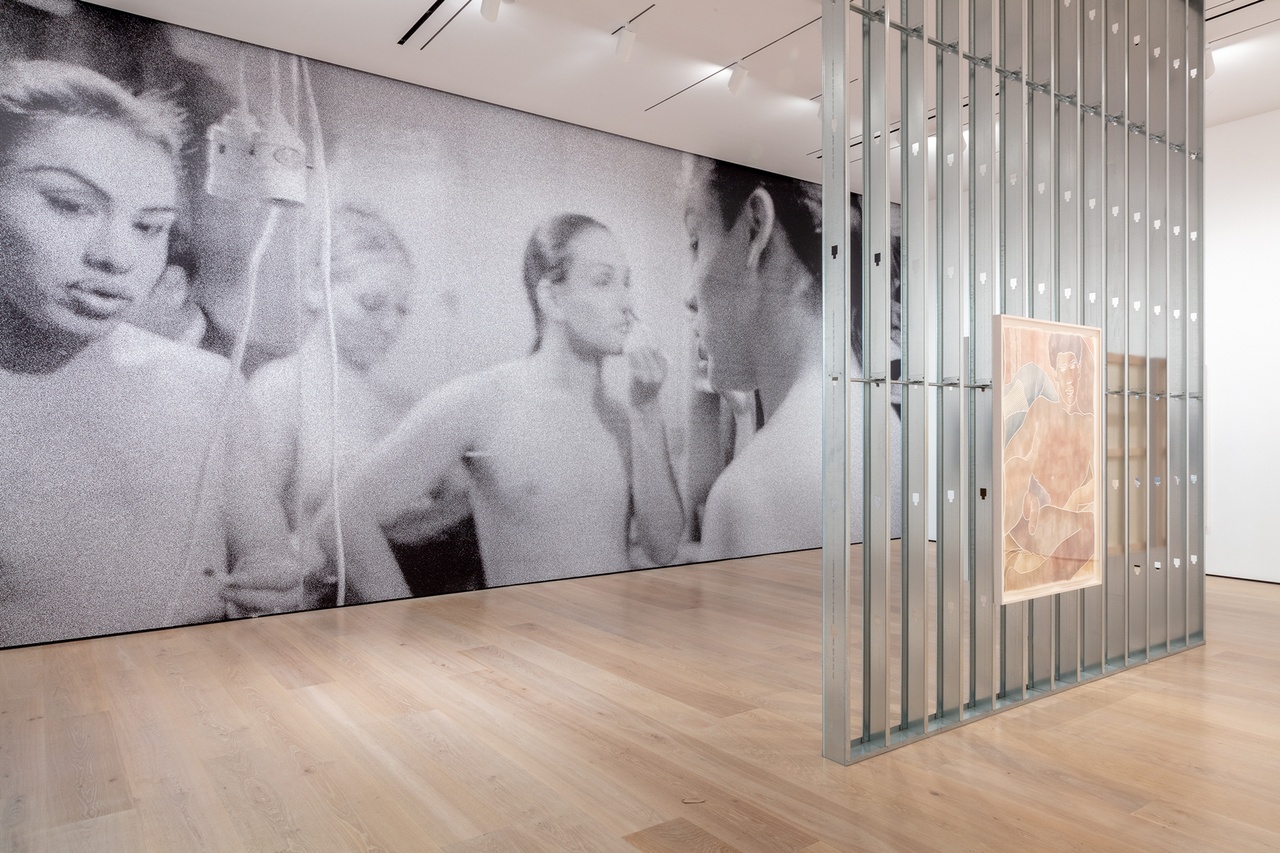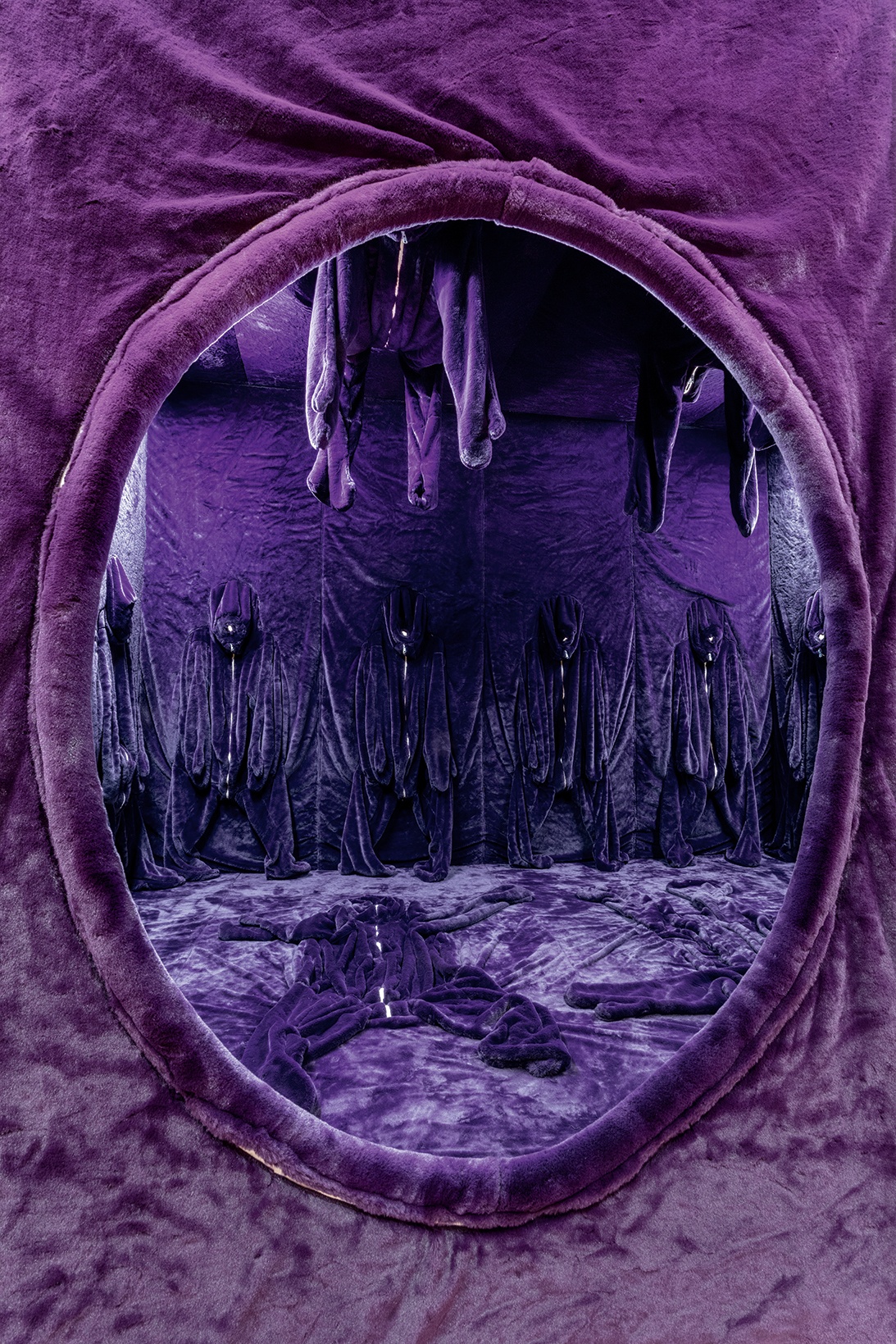LOCAL FLAVORS Harry C. H. Choi on “Made in L.A. 2020: a version” at the Hammer Museum at UCLA and the Huntington Library, Art Museum, and Botanical Gardens, San Marino, Los Angeles County

Larry Johnson, “Bristol,” 2020
There seems to be no shortage of features that distinguish Los Angeles from other metropoles around the world, whether it be the interminable supply of sunshine or its airy, sprawling urban vista. But how does the city’s art stand apart from that of, say, Berlin or New York? Within the history of postwar American art, there are indeed the hardcore conceptual legacies of CalArts initiated by the likes of Michael Asher, as well as the indelible phenomenological experiences as conceived by Light and Space artists, which seal the claim that the Wild West undeniably offers something different from its counterparts. But when artistic practices are flattened into JPEGs and circulate instantaneously through wireless networks across spatiotemporal constraints, to what extent does the site of artistic production matter?
That is a question encountered by all biennials attempting to survey artistic landscapes of specific locales in the present moment, and one that “Made in L.A. 2020: a version” answers by resisting the urge to iron out Los Angles into a static, passive geographical backdrop against which contemporary artistic production unfolds. Rather, the iteration curated by Myriam Ben Salah and Lauren Mackler teased out the setting by crisscrossing its historical narratives and collective memories along with its physical fabric in order to chronicle a version of the city in its disparate, overlapping threads that traverse the imagined and the somatic. Such a logic was most evidently reinforced by the decision to bisect the exhibition into two venues – the Hammer Museum at UCLA in the bustling district of Westwood, and the Huntington in the leafy suburbia of San Marino – as a means to connect two opposing foci of the seemingly unending county. As most of the artists in the exhibition presented works in both locations, an encounter with “Made in L.A. 2020” prompted a drive through the city’s web of highways, punctuated by a stop around MacArthur Park, which was host to Larry Johnson’s mischievous billboards that featured the names of iMessage bubbles and gay porn studios. Ingrained within the act of seeing the show was thus a foray into some of the most quintessential experiences that define Los Angeles.

“Made in L.A. 2020: a version,” Hammer Museum, Los Angeles, 2021, installation view
These associations, undoubtedly evocative although somewhat hackneyed, were nonetheless complicated within the white cube as the varying connections between works of art and the city were unveiled. And it was from the intersection of these accounts that the “version” of Los Angeles as conceived by Ben Salah and Mackler emerged. Take, for instance, the example of Nicola L. (1932–2018): after moving from Paris, where she produced work alongside the nouveau réalistes, the artist became a longtime fixture of the renowned Chelsea Hotel in New York before passing away in Los Angeles, where her estate is currently overseeing the reconstruction of historical works such as La Chambre en Fourrure (The fur room, 1969) that was presented at the Hammer. An enclosed cubical structure covered in luscious violet velvet with openings for the arms, legs, and faces of curious spectators that rendered it “wearable” from the outside, the tongue-in-cheek sculpture was shown alongside other works from the Pénétrables series exhibited at the Huntington. Through Nicola L.’s works, Los Angeles is reimagined as the place where the last remaining moments of an artist’s life were shed, as well as a ground from which posthumous restorations of some of her unrealized ideas were enabled. The impetus to look beyond Los Angeles of the 21st century was also communicated through Sabrina Tarasoff’s contribution at the Huntington, a “haunted house” constructed with audiovisual materials from protagonists who had congregated around Beyond Baroque Literary Arts Center in the 1970s and ’80s, such as Dennis Cooper, Bob Flanagan and Sheree Rose, Amy Gerstler, Jack Skelley, and Ed Smith and David Trinidad. By igniting the archival knowledge stored in the city through these reconstructive endeavors, the show challenged the standard mandate delegated to biennials of its kind: to keep its ear to the ground as closely as possible to make an immediate statement on the here and now.
The more contemporary offerings of the exhibition, in truth, did not always meet the bar raised by the critical allure of such propositions. This is not to say that the exhibition lacked enticing new discoveries. Among the most memorable were the eerily alluring paintings by Katja Seib, which are populated by performative figures reminiscent of those flamboyant, fantastical characters in Kai Althoff’s canvases. So, too, was Niloufar Emamifar’s play Iron Holds the Whale (A Play in Five Acts for the Hammer Museum), whose script depicts the behaviors of museum employees and visitors as well as the surrounding architecture. Embedded in the Hammer, incorporating the museum’s own typographical systems, the work comprised an elegant theatrical insertion that ruminated on the potential of performance to evoke the notion of the commons. The extent to which these emerging talents were able to offer insights into the markedly growing scene of Los Angeles was nonetheless unclear, although the more “historical” takes on Los Angeles naturally prompted questions on the state of the arts in the city as it is now. The same could be said about the biennial’s attention to performance, much of which had to be reconceptualized within the exhibition due to the obvious physical constraints of pandemic-era America. There was one performative work after another in their recorded or residual forms in the galleries, but what might give the medium such significance in today’s Los Angeles remained an unanswered question.

Nicola L., “La Chambre en fourrure,” 1969/2020
No retrospective of 2020 is complete without a discussion of both the global pandemic and the police brutality that shattered the United States and the world at large, which brought forth the question of how art could engage with the political climate, especially when it comes to the experiences of ethnic and social minorities. In fact, Ben Salah and Mackler were quite prescient in anticipating such social considerations, having conceived the exhibition months before these events unfolded and shook artistic discourses within the United States to the core. But by carefully delineating demographics into neatly defined cross sections, the exhibition at times compartmentalized personal identities and simplified layers of lived experiences. Monica Majoli’s prints of naked men with outsized penises collected from gay pornographic magazines from the 1970s, for instance, reduced gay alterity to the realm of the senses and images of desire. While the portraits of trans performers and boyish men in Echo Park taken through the empathetic lens of Reynaldo Rivera from the 1990s had a tender, melancholy touch, these also left the notion of queerness within the exhibition in the past tense, leaving behind the task of representing the LGBTQ+ experience as it manifests in the present moment. The Black and brown bodies on view in the exhibition, on the other hand, were often introduced through the vocabulary of vernacular aesthetics, as in the hyperrealistic paintings of Mario Ayala that remix imageries found in the Chicano magazine Teen Angels with tattoo patterns and storefront signs, or in the loose, effervescent paintings of friends and family by Brandon D. Landers. Irrespective of the appeal of these lively paintings, however, the overflow of such gestures within the exhibition left the spectator wanting a more exhaustive exposure to the array of artistic languages that could reflect the experiences of racial identities.
These questions, understandably, are not endemic to “Made in L.A. 2020.” All biennials are scrutinized for the logic and relevance of their findings in relation to their sites of origin, and the notion of diversity in contemporary art is only beginning to be conceived in its wider manifestations in recent history. What remains to be conceptualized, though, is a curatorial strategy that does not streamline these topical issues to a set of oft-repeated cues. Undoing these ties seems like a necessary first step for a more exhaustive sampling of the locality, implausible as that goal might be.
“Made in L.A. 2020: a version,” the Hammer Museum at UCLA and the Huntington Library, Art Museum, and Botanical Gardens, San Marino, Los Angeles County, April 17–August 1, 2021.
